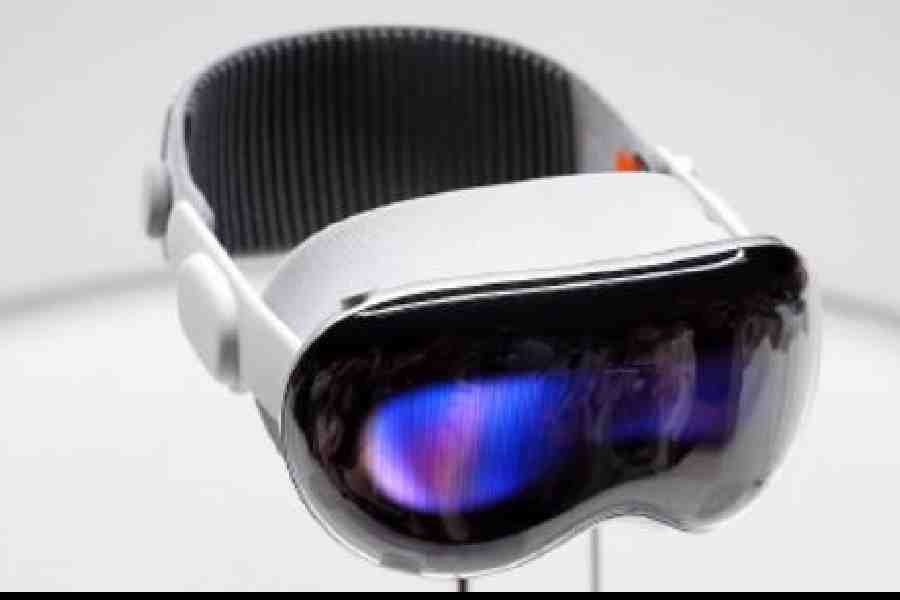I got a sneak peek into Apple’s vision for the future of computing. For about a half-hour last week, I wore the $3,500 Vision Pro, the company’s first high-tech goggles, which will be released next year. I walked away with mixed feelings, including a nagging sense of skepticism.
On one hand, I was impressed with the quality of the headset, which Apple bills as the beginning of an era of “spatial computing,” where digital data blends with the physical world to unlock new capabilities. Imagine wearing a headset to assemble furniture while the instructions are digitally projected onto the parts, for instance, or cooking a meal while a recipe is displayed in the corner of your eye.
Apple’s device had high-resolution video, intuitive controls and a comfortable fit, which felt superior to my experiences with headsets made in the past decade by Meta, Magic Leap, Sony and others.
But after wearing the new headset to view photos and interact with a virtual dinosaur, I also felt there wasn’t much new to see here. And the experience elicited an “ick” factor I’ve never had before with an Apple product. More on this later.
Fit and control
The Vision Pro, which resembles a pair of ski goggles, has a white USB cable that plugs into a silver battery pack that I slipped into the pocket of my jeans. To put it on my face, I turned a knob on the side of the headset to adjust the snugness and secured a Velcro strap above my head.
I pressed down on a metal button toward the front of the device to turn it on. Then I ran through a setup process, which involved looking at a moving dot so the headset could lock in on my eye movements. The Vision Pro has an array of sensors to track eye movements, hand gestures and voice commands, which are the primary ways to control it. Looking at an icon is equivalent to hovering over it with a mouse cursor; to press a button, tap your thumb and index fingers together, making a quick pinch.
All the many uses?
Apple first walked me through looking at photos and a video of a birthday party. I could turn a dial near the front of the Vision Pro counterclockwise to make the photo backgrounds more transparent and see the real world or turn it clockwise to make the photo more opaque to immerse myself.
Apple also had me open a meditation app that showed 3D animations while soothing music played and a voice instructed me to breathe. But the meditation couldn’t prepare me for what was coming next: a video call.
A small window popped up — a notification of a FaceTime call coming from another Apple employee wearing the headset. I stared at the answer button and pinched to take the call.
The Apple employee in the video call was using a “persona,” an animated 3D avatar of herself that the headset created using a scan of her face. Apple portrays videoconferencing through the personas as a more intimate way for people to communicate and even collaborate in virtual space.
Her facial expressions looked lifelike, and her mouth movements synchronised with her speech. But because of how her avatar was digitally rendered, I could tell it was fake. It resembled a video hologram I had seen in sci-fi movies like Minority Report.
In the FaceTime session, the Apple employee and I were supposed to collaborate on making a 3D model in an app called Freeform. But I stared at it blankly, thinking about what I was seeing. After three years of being mostly isolated during the pandemic, Apple wanted me to engage with what was essentially a deepfake video of a real person. I could feel myself shutting down. My “ick” sensation was probably what technologists describe as uncanny valley, a feeling of unease when a human sees a machine creation that looks too human.
A technological feat? Yes. A feature I would actually want to use? Probably not.
Real people
The Apple goggles looked and felt better than the competing headsets. But I wasn’t sure that mattered. Headsets from Meta and Sony PlayStation were much cheaper and already quite entertaining.
But more important to me was the idea of connecting with others, including family members and colleagues, through Apple headsets.
“When you’re FaceTiming with your mom would you rather see her deepfake digital avatar, or a crummier video call where she’s holding the phone camera up to her face at an unflattering angle,” I asked my wife.
“The latter,” she said without hesitation. “That’s real.”
NYTNS











